
Advances in Sample Preparation
Scope & Guideline
Transforming Chemistry with Cutting-Edge Preparation Methods
Introduction
Aims and Scopes
- Innovative Extraction Techniques:
The journal emphasizes the development of novel extraction methods, including solid-phase microextraction (SPME), liquid-liquid extraction, and miniaturized approaches that improve analyte recovery and purity. - Green Chemistry Approaches:
There is a strong focus on environmentally friendly sample preparation methods, which minimize solvent use and waste generation, and employ sustainable materials and techniques. - Application of Advanced Materials:
Research in the journal often includes the use of advanced materials such as metal-organic frameworks (MOFs), magnetic nanoparticles, and deep eutectic solvents to enhance extraction efficiency and selectivity. - Integration with Analytical Techniques:
The journal covers studies that integrate sample preparation with advanced analytical techniques like LC-MS, GC-MS, and spectroscopic methods, aiming for improved sensitivity and rapid analysis. - Multivariate Optimization:
The application of multivariate statistical methods for optimizing sample preparation processes is a notable area of focus, allowing for the refinement of methods based on complex datasets.
Trending and Emerging
- Miniaturization of Sample Preparation:
There is a rising trend towards miniaturized sample preparation techniques, such as microextraction methods, which allow for reduced sample size, lower solvent usage, and faster analysis times. - Sustainable and Green Analytical Chemistry:
Sustainability in sample preparation is increasingly prominent, with a focus on methods that reduce environmental impact, such as the use of deep eutectic solvents and other eco-friendly materials. - Integration of Machine Learning and Automation:
The application of machine learning and automation to optimize sample preparation processes is gaining traction, indicating a shift towards more efficient and high-throughput methodologies. - Biomarker and Clinical Application Development:
Research focusing on the extraction and analysis of biomarkers for clinical diagnostics, particularly in cancer detection and environmental monitoring, is emerging as a significant area of interest. - Advanced Characterization Techniques:
The use of advanced characterization methods, such as FTIR spectroscopy and comprehensive two-dimensional gas chromatography, is trending, allowing for more detailed analysis of extracted samples.
Declining or Waning
- Traditional Solvent-Based Methods:
There has been a noticeable reduction in the publication of studies focusing on conventional solvent-based extraction methods, as the field shifts towards greener, more sustainable alternatives. - Basic Sample Preparation Techniques:
Papers detailing basic or well-established sample preparation techniques are becoming less common, with a preference for innovative and advanced methodologies that address current analytical challenges. - Single-Use Extraction Devices:
The prevalence of studies centered on single-use or disposable extraction devices has diminished, possibly due to the increasing emphasis on sustainability and the development of reusable systems.
Similar Journals

Chemical Methodologies
Exploring New Frontiers in Chemical ResearchWelcome to Chemical Methodologies, a premier journal published by SAMI PUBLISHING CO-SPC, dedicated to advancing the field of chemistry through innovative research and methodologies. With an ISSN of 2645-7776 and an E-ISSN of 2588-4344, this journal provides a vital platform for researchers and scholars to share their findings in areas encompassing physical, theoretical, and organic chemistry. Despite its initial HIndex and quartile rankings still being established, the journal's evolving impact within the academic landscape is underscored by its Scopus Ranks, which place it in the 35th percentile for physical and theoretical chemistry and the 33rd percentile for organic chemistry. Since its inception in 2022, and continuing through 2024, Chemical Methodologies aims to foster collaboration and knowledge dissemination among academics and practitioners alike, bridging theoretical concepts and practical applications. This open-access platform enhances accessibility for researchers and students worldwide, ensuring that groundbreaking contributions to chemical science reach a broad audience.
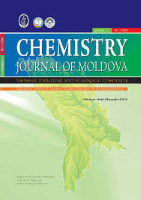
Chemistry Journal of Moldova
Fostering Knowledge: Open Access to Transformative Chemical ResearchChemistry Journal of Moldova is a pioneering open-access journal dedicated to fostering the dissemination of significant research in the diverse fields of chemistry, including Environmental Chemistry, Process Chemistry and Technology, and more. Published by the esteemed Academia Sciences Moldova, Institute of Chemistry, this journal has been at the forefront of scientific inquiry since its establishment in 2006. With an ISSN of 1857-1727 and a digital presence through its E-ISSN of 2345-1688, it provides an accessible platform for researchers, students, and professionals to share and engage with cutting-edge findings. Although currently ranked in the Q4 quartile in several chemistry categories, the journal is committed to improving its impact within the academic community and aims to highlight emerging trends and technologies in the chemistry domain. The journal's office is located at 3 Academiei Str, Chisinau MD-2028, Moldova. As it converges its publication years from 2016 to 2024, the Chemistry Journal of Moldova invites all contributors and readers to explore its rich repository of research that bridges innovative ideas to practical applications.
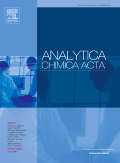
Analytica Chimica Acta
Empowering discoveries through innovative research.Analytica Chimica Acta is a prestigious peer-reviewed journal published by ELSEVIER, renowned for its significant contribution to the fields of analytical chemistry, biochemistry, environmental chemistry, and spectroscopy. Established in 1947, this journal has solidified its reputation, reflected in its impressive impact factors and Scopus rankings, including a Q1 classification in Analytical Chemistry and Spectroscopy, and a Q2 ranking in both Biochemistry and Environmental Chemistry. With its comprehensive scope, Analytica Chimica Acta aims to publish innovative research, critical reviews, and technical notes that advance the understanding and application of analytical methods. As an essential resource for researchers, professionals, and students alike, it encourages the dissemination of high-quality research that addresses contemporary challenges in chemical analysis and promotes interdisciplinary collaboration. While the journal operates primarily on a subscription basis, it also offers unique opportunities for authors to reach a broad audience and engage in the global scientific discourse.
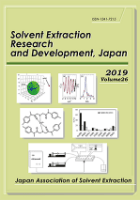
SOLVENT EXTRACTION RESEARCH AND DEVELOPMENT-JAPAN
Transforming chemical engineering with solvent extraction insights.SOLVENT EXTRACTION RESEARCH AND DEVELOPMENT-JAPAN is a prominent journal dedicated to advancing the field of solvent extraction and its applications in chemical engineering and general chemistry. Published by the Japan Association for Solvent Extraction, this journal plays a crucial role in disseminating innovative research findings, technical advancements, and comprehensive reviews pertinent to solvent extraction processes and technologies. With a publication history dating back to 1996 and extending through 2024, it serves as a vital resource for academics, industry professionals, and students alike. Although it currently does not offer open access, the journal provides invaluable insights into solvent extraction which can enhance both theoretical knowledge and practical applications in various industries. Its Scopus rankings indicate a competitive presence in the field, making it an essential read for anyone engaged in chemical engineering research. The journal is accessible via its office located at Professor Kenichi Akiba's residence at the University of Kitakyushu, and it invites contributions from researchers aiming to elevate the understanding and efficiency of solvent-based methodologies in chemical processes.
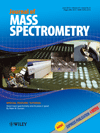
JOURNAL OF MASS SPECTROMETRY
Transforming Data into Knowledge through Mass SpectrometryThe Journal of Mass Spectrometry, published by Wiley, is a vital resource for researchers and professionals in the fields of chemistry and medicine. With an ISSN of 1076-5174 and an E-ISSN of 1096-9888, this journal specializes in the latest advancements in mass spectrometry, an essential analytical tool used in various applications including drug development, environmental monitoring, and biological research. Positioned in the Q3 quartile for both Medicine (miscellaneous) and Spectroscopy categories in 2023, the journal stands out for its commitment to disseminating high-quality research findings. Its Scopus ranking places it at 36th in the field of Chemistry _ Spectroscopy, within the 53rd percentile, reflecting its growing impact and relevance. Researchers are encouraged to submit their work and explore cutting-edge articles published between 1995 and 2024. Despite its non-open access model, the journal remains accessible through various academic platforms, fostering a rich exchange of knowledge among scientists worldwide.

Food Analytical Methods
Pioneering research for a safer and healthier food supply.Food Analytical Methods, published by Springer, is an esteemed journal dedicated to the innovative field of analytical methodologies within the food sciences. With an ISSN of 1936-9751 and E-ISSN of 1936-976X, this journal serves as a pivotal platform for researchers and professionals to exchange insights, methodologies, and findings related to food quality analysis, safety measures, and innovative technologies in food science. As of 2023, Food Analytical Methods boasts impressive Scopus rankings, including Q2 in Analytical Chemistry and Food Science, positioning it among the top journals in its category. The journal's commitment to enhancing food safety and quality through rigorous research underscores its importance in both academic and industrial applications. Although it does not currently operate under an open-access model, it provides exceptional value through its rigorous peer-review process and comprehensive publication standards, further inviting contributions from both established and emerging scientists in the field. With coverage spanning from 2008 to 2024, this journal continues to address critical research areas, thereby shaping the future of food analytics.
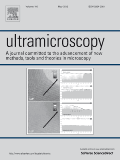
ULTRAMICROSCOPY
Exploring the Depths of Atomic and Molecular InsightsULTRAMICROSCOPY is a premier journal published by Elsevier, specializing in the fields of atomic and molecular physics, optics, as well as electronic, optical, and magnetic materials. Established in 1975 and continuing its publication through 2024, this journal has earned a distinguished reputation, reflected in its classification within Q1 and Q2 quartiles, representing the top 25% of journals in its category. With a Scopus rank of 49 out of 141 in the instrumentation domain, it holds a compelling percentile rank of 65%, demonstrating its impact and relevance in advancing research. The journal serves as an essential platform for researchers, professionals, and students alike, promoting high-quality, peer-reviewed articles that explore innovative techniques and applications in microscopy. While ULTRAMICROSCOPY is not open access, it continues to play a crucial role in disseminating cutting-edge findings to the scientific community globally, fostering collaboration and discussion among experts in the field.

Chinese Journal of Chromatography
Innovative Insights in Analytical Chemistry and BeyondChinese Journal of Chromatography, published by SCIENCE PRESS, is a dedicated platform for disseminating pioneering research in the fields of Analytical Chemistry, Biochemistry, and Organic Chemistry. Established in 1997, this esteemed journal offers invaluable insights into chromatographic techniques and their applications, showcasing studies that contribute to the advancement of chemical engineering and electrochemistry. Although it currently holds a Q4 ranking in several categories, the journal aims to foster growth and knowledge among researchers, professionals, and students alike. With a continuous publication window extending until 2024, the Chinese Journal of Chromatography invites submissions that not only enhance scientific understanding but also address real-world challenges through innovative chromatographic solutions. Researchers looking for a collaborative community will find this journal a vital resource in their ongoing academic endeavors.

SPECTROSCOPY
Transforming Knowledge into Spectroscopic SolutionsSPECTROSCOPY is a vital peer-reviewed journal published by MJH Life Sciences, dedicated to advancing the field of spectroscopy and its applications across various disciplines including analytical chemistry, atomic and molecular physics, and optics. Established with a vision to disseminate cutting-edge research, the journal has a broad scope that encompasses the latest developments, methodologies, and technologies in spectroscopy. Although positioned in the Q4 quartiles for its categories as of 2023, it remains an important resource for researchers and students alike, providing insights into emerging trends and challenges in the field. Issues are published regularly, facilitating knowledge exchange and collaboration among professionals. With access options available in traditional formats, SPECTROSCOPY strives to reach a diverse audience, underscoring its relevance and necessity in today’s ever-evolving scientific landscape. For those in pursuit of innovative solutions and comprehensive analyses in spectroscopy, this journal serves as an indispensable platform.
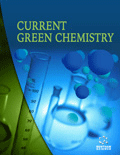
Current Green Chemistry
Unveiling the future of chemistry with eco-friendly insights.Current Green Chemistry, published by Bentham Science Publishers, is a pivotal scholarly resource devoted to advancing the field of green chemistry. With ISSN 2213-3461 and E-ISSN 2213-347X, this journal serves as a crucial platform for researchers and professionals to explore innovative and sustainable practices within the chemical sciences. The journal has demonstrated significant recognition, evidenced by its categorization in the third quartile (Q3) across various specializations including Analytical Chemistry and Inorganic Chemistry, and even a fourth quartile (Q4) in Organic Chemistry, according to the latest Scopus metrics. This indicates a growing influence in relevant fields, making it a valuable reference for contemporary environmental initiatives. The journal's accessible nature, although not open access, ensures researchers can still engage with high-quality, peer-reviewed content. Spanning an impressive converged period from 2019 to 2024, Current Green Chemistry is committed to enhancing the visibility of groundbreaking research that aligns with sustainable development objectives, making it an essential resource for anyone interested in the future of chemistry.